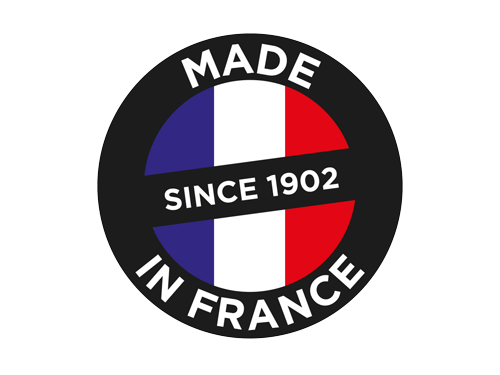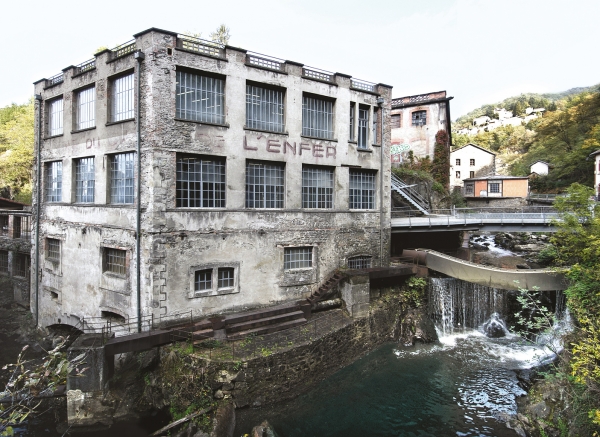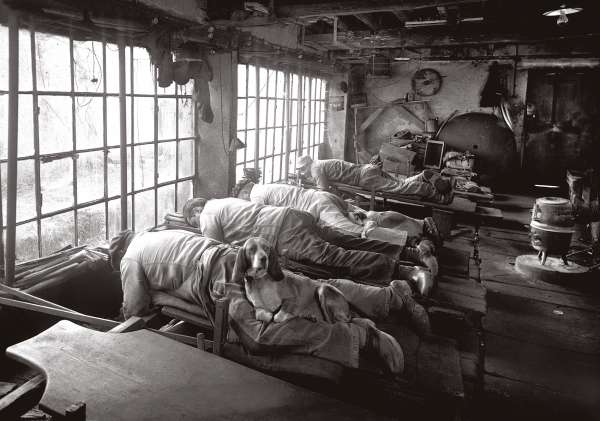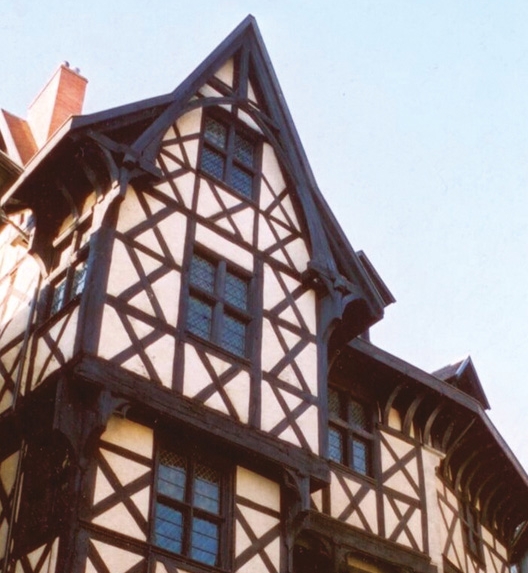HISTORY THE AUVERGNE, A REGION FAMOUS FOR ITS KNIVES LYING BETWEEN THE DÔME AND THE DORE
Located in the Puy-de-Dôme, facing the Puys mountain chain in the heart of the Livradois-Forez Regional Nature Park, Thiers is a fascinating town that holds visitors in its thrall. A medieval town brimming with character stretching from its rocky spur to the fertile Limagne plain, Thiers proudly displays its cutlery manufacture, the history of which goes back six hundred years. Whether in a street name (rue de la Coutellerie, rue des Forgerons, rue des Usines, rue de l’Industrie, etc.), a trade sign hung outside or painted onto a boutique, the remains of the first industrial forges nestling in the valley or a paddle wheel on the Durolle river, it is impossible to wander around the town’s streets and alleys and not notice the myriad traces left by the cutlery industry.
FIRST THERE WAS THE DUROLLE, AND THEN CAME THE KNIFE…
It is claimed that the origin of the cutlery industry goes way back to the Middle Ages. Legend has it that it was the crusaders from the Auvergne who brought metalworking secrets back with them from their travels in the East. It is more likely, however, that the Thiers cutlery industry goes back to the 15th century as witnessed by the thirty or so knife makers referenced in the tax registers of the times. Within a century, this number had grown to two hundred.
Thiers was not, however, an obvious candidate for developing this specialisation. There is no local iron mining or steel production, nor any sandstone quarries to provide the material for the millstones. While the closeness of Saint Etienne (an arms manufacturing town) certainly helped develop the knife-making industry in Thiers, it was the forceful River Durolle that would provide the hydraulic energy required to power the mills and knife-making workshops, coupled with the formidable obduracy and determination of a population living in a region of steep, rugged terrain. By the 17th century, Thiers was exporting its knives from ports in Bordeaux and Nantes, via Spain and Italy, down to the Levant. It was in the 19th century, however, that the industry would experience phenomenal growth with 25,000 people working in the cutlery industry by 1855.
Local memory still remembers the “yellow stomach”, the hundred of grinders who sharpened blades lying on their stomachs above the millstones, a position specific to the French cutlery, with a small dog lying on their legs to keep them warm
HUNDREDS OF « YELLOW BELLIES » IN THE CREUX DE L’ENFER
Built along the banks of the Durolle, in what is now known as the « Vallée des Usines » (Factory Valley), otherwise known as the Creux de l’Enfer, the workshops took full advantage of the river’s hydraulic power to produce and supply massive numbers of knives to wholesaler ironmongers in France and Navarre through an effective work plan known as « parcellisation ». This involved breaking the manufacturing process down into several separate steps, each one of which was « parcelled out » to a different workshop. This often involved employees working at home governed by a specific collective labour agreement. Local memory still remembers the « yellow bellies », the hundreds of grinders who sharpened blades lying on their stomachs above the millstones, a position specific to the French cutlery industry, with a small dog lying on their legs to keep them warm.
THIERS, A VIBRANT INDUSTRIAL TOWN
Although the cutlery businesses have now moved away from the banks of the Durolle, they still account for 70% of knife production in France (table knives, pocket knives, professional knives, and so on); there are currently over 60 knife-making businesses installed in the various industrial zones of the Thiers basin. One of the key features of the Thiers cutlery industry was and still is the production and manufacture of a huge range of regional knives, the most famous of which is the « Laguiole » (named after a village in the Aveyron). Thiers knife-makers focused on producing regional knives for several generations, but it wasn’t until 1994 that any of the knives bore the name « Thiers ». Today, the « Thiers® » is produced by the Confrérie du Couté de Tié. It is immediately recognizable by its shape, its name engraved on the blade, its stamping (a « T » inside a square), in addition to a very strict set of quality assurance specifications that provide consumers with guaranteed safety and security.
 Thiers has not, therefore, lost any of its vitality and is still the undisputed capital of the knife-making industry with around 100 cutlery manufacturers and 60 subcontractors displaying their expertise.
Thiers has not, therefore, lost any of its vitality and is still the undisputed capital of the knife-making industry with around 100 cutlery manufacturers and 60 subcontractors displaying their expertise.
Laguiole is not a knife brandname but only the name of a small town which gave its name to a shape of a curved knife dress up with a little bee. 80% of the Laguiole knives are made in France, in Thiers, for centuries.











